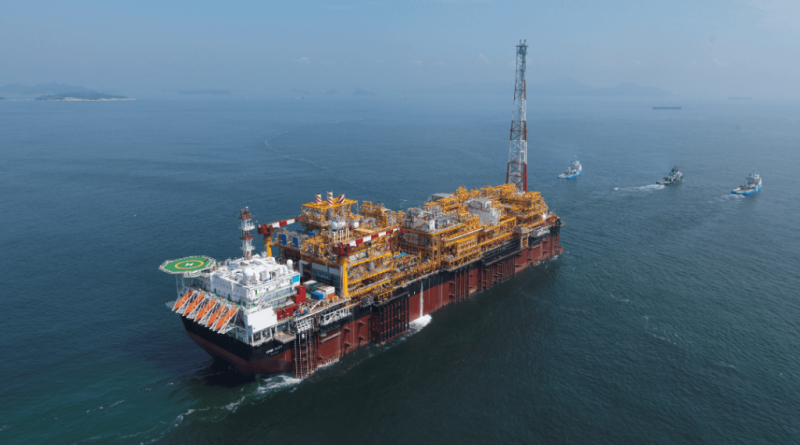TotalEnergies announced on 21 May the final investment decision (FID) for the deepwater Kaminho project offshore Angola, aiming for first oil by 2028. The announcement was made in the capital Luanda, with Angolan President João Lourenço and TotalEnergies CEO Patrick Pouyanné in attendance.
The $6-billion deepwater project, located in Angola’s Block 20, targets the Cameia and Golfinho fields, located about 100 km offshore and in water depths of 1700 m. TotalEnergies will use a converted very large crude carrier as a floating production storage and offloading (FPSO) unit, with a peak capacity of 70,000 B/D. This will be TotalEnergies’ seventh FPSO in Angola.
The project counts as the first major deepwater development in Angola’s pre-salt Kwanza basin which is considered to be geologically analogous to Brazil’s prolific Campos Basin.
In line with wider industry ambitions to decarbonize FPSOs, TotalEnergies plans to mitigate emissions by using all-electric subsea production systems and reinjecting all associated gas to help it achieve zero routine flaring.
A memorandum of understanding signed with Sonangol in conjunction with the sanctioning may lead to TotalEnergies sharing its decarbonization expertise along with support for Sonangol’s new research and development center that is focused on reservoir geology, electrification, and solar power technologies.
“We look forward to joining forces with Sonangol in technology to promote innovation and low-carbon technologies for the energy industry in Angola, in particular to slash methane emissions and contribute to the diversification of Angola's energy mix,” said Pouyanné in a statement.
TotalEnergies operates Block 20 with a 40% interest, alongside Petronas and Sonangol, holding 40% and 20%, respectively.
The project was initially expected by industry observers to be sanctioned by 2022 but faced delays that have proven endemic to Block 20.
The concession area’s convoluted history began when the Cameia and Golfinho fields were discovered by US independant Cobalt International in 2012 and 2016, respectively. Cobalt filed for bankruptcy in 2015 and that same year agreed to sell its 40% interest in the assets to Sonangol for $1.75 billion.
However, Cobalt alleged in bankruptcy court that Sonangol made only a single payment of $250 million. The two companies eventually settled through arbitration in 2018, resulting in Sonangol agreeing to issue an additional $500 million in exchange for the assets.
In 2019, Sonangol partnered with TotalEnergies by selling the Paris-based supermajor a 50% stake in Block 20 for $400 million.
The deal included an additional $100 million payable at FID and a maximum contingency payout of $250 million based on production and crude price targets over the project's lifespan.
At that time, BP held a 30% interest, which it later transferred to TotalEnergies. In 2023, TotalEnergies brought Petronas into the project as a 40% partner in exchange for $400 million.
Block 20 is formed by two separate blocks that were combined by presidential decree in 2023.
Despite being Africa’s second-largest oil producer, Angola voluntarily left OPEC in December after years of failing to meet production quotas set by the cartel. Angola's crude output peaked at 1.9 million B/D in 2010 but fell to an average of nearly 1.1 million B/D last year.


